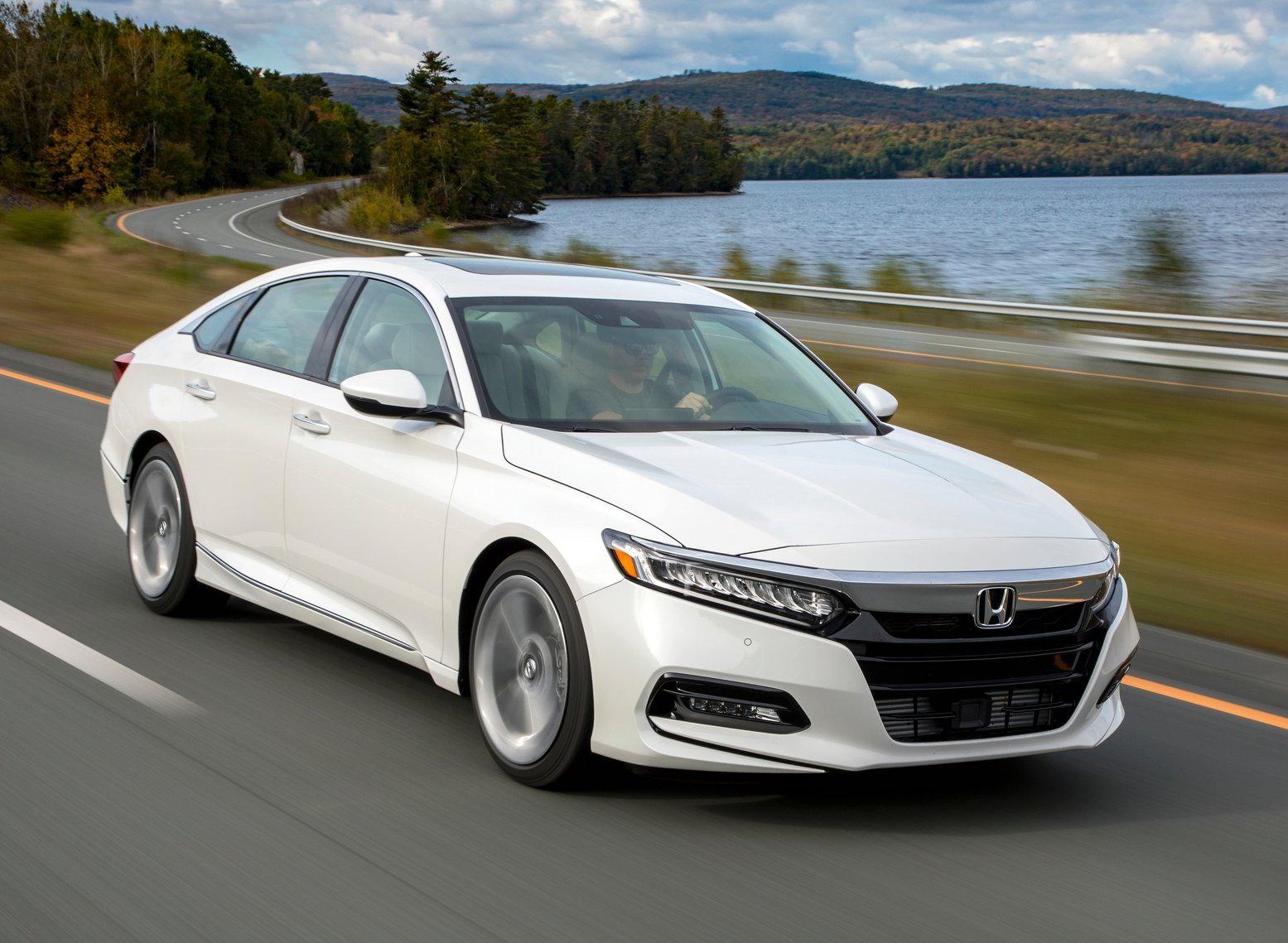For millions of drivers worldwide, the daily commute represents one of the most significant tests of automotive durability and comfort. Whether you’re navigating congested city streets or cruising down interstate highways, your vehicle becomes your mobile office, sanctuary, and sometimes your lifeline.
The difference between a car that thrives during extended daily drives and one that deteriorates rapidly can mean the difference between years of reliable service and costly repairs, uncomfortable rides, and unexpected breakdowns.
Long commutes demand vehicles that excel in multiple areas: fuel efficiency to keep operating costs manageable, comfort features that reduce driver fatigue, reliability to prevent stranding you during rush hour, and build quality that withstands the relentless wear of daily high-mileage use.
Some vehicles are engineered specifically with these demanding conditions in mind, incorporating robust powertrains, ergonomic interiors, and advanced safety systems that make even the longest drives bearable.
Conversely, certain vehicles may appear attractive on the showroom floor but reveal their weaknesses when subjected to the rigors of daily commuting. These cars often suffer from premature wear, frequent maintenance issues, poor fuel economy, or uncomfortable driving positions that become torturous over extended periods.
Understanding which vehicles excel in long-distance comfort and which ones age rapidly under demanding conditions can save you thousands of dollars and countless hours of frustration, making your daily journey a pleasant experience rather than a dreaded chore.
5 Cars That Handle Long Commutes With Ease
From temperature extremes that challenge cooling systems to the repetitive strain of daily commuting routines, these remarkable automobiles continue operating smoothly without developing premature wear patterns.
Owners report hundreds of thousands of trouble-free miles with these dependable transportation solutions a testament to engineering excellence that proves its worth through consistent reliability and maintained comfort throughout ownership.
The Toyota Camry’s legendary powertrain combines efficient fuel consumption with bulletproof reliability, featuring engines that thrive on highway cruising and maintain smooth operation through extensive mileage accumulation. The Honda Accord delivers exceptional comfort with seats designed for extended sitting, while its transmission and engine systems handle daily commuting stress without premature failure.
The Lexus ES offers luxury-grade refinement, featuring superior noise isolation and suspension tuning that minimize fatigue during extended drives while maintaining mechanical durability.
The Subaru Outback excels in all-weather commuting with its standard all-wheel drive system and robust boxer engine that handles varied driving conditions reliably. The Mazda6 offers engaging driving dynamics combined with excellent fuel economy, featuring a responsive engine and well-tuned chassis that make long commutes enjoyable rather than tedious.
1. Toyota Camry Hybrid
The Toyota Camry Hybrid represents the pinnacle of long-distance commuting excellence, combining Toyota’s legendary reliability with cutting-edge hybrid technology that makes every mile both economical and comfortable.
This midsize sedan has earned its reputation as a commuter favorite through decades of refinement and engineering excellence that specifically addresses the needs of daily drivers who rack up serious mileage.
At the heart of the Camry Hybrid’s appeal lies its sophisticated powertrain system, which seamlessly combines a 2.5-liter four-cylinder engine with an electric motor to deliver exceptional fuel economy without sacrificing performance.
The system produces a combined 208 horsepower, providing adequate acceleration for highway merging and passing while achieving an EPA-estimated 51 mpg in the city and 53 mpg on the highway.
This exceptional fuel efficiency translates to significant savings at the pump, especially for drivers covering 100+ miles daily. The hybrid system’s ability to operate in electric-only mode during low-speed traffic situations reduces engine wear and provides whisper-quiet operation during stop-and-go commuting scenarios.
The Camry Hybrid’s interior design prioritizes long-distance comfort with supportive seats that maintain their shape even after hours of driving. The driver’s seat offers multiple adjustment options, including lumbar support that can be fine-tuned to prevent back fatigue during extended drives.
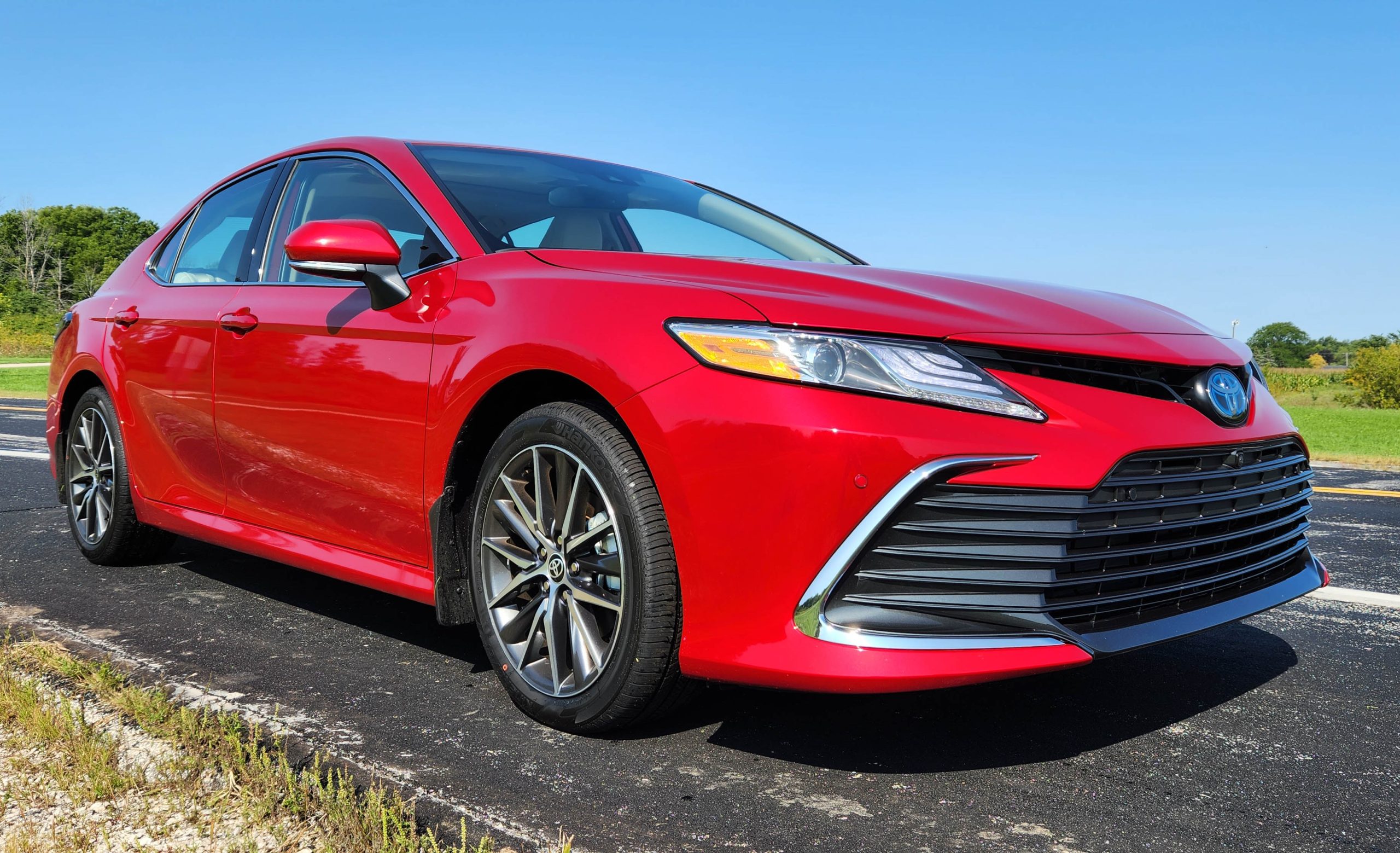
The cabin’s spacious design ensures that even taller drivers won’t feel cramped, while the rear seats provide adequate room for passengers or cargo.
The climate control system works efficiently to maintain comfortable temperatures without significantly impacting fuel economy, and the cabin’s sound insulation effectively reduces road noise and wind noise that can cause fatigue during long drives.
Technology integration in the Camry Hybrid focuses on enhancing the driving experience rather than overwhelming it with unnecessary complexity.
The infotainment system responds quickly to inputs and provides clear navigation instructions through both visual and auditory cues. The available premium audio system delivers crisp sound quality that makes music, podcasts, or audiobooks enjoyable during lengthy commutes.
Advanced safety features, including adaptive cruise control, lane departure warning, and automatic emergency braking work together to reduce driver stress and fatigue by handling routine driving tasks and providing additional safety margins during long highway drives.
The Camry Hybrid’s build quality reflects Toyota’s commitment to durability and longevity. The vehicle’s construction uses high-strength materials in key structural areas while maintaining reasonable weight for optimal fuel efficiency.
The hybrid system components are designed to last the lifetime of the vehicle, with the battery pack carrying an extended warranty that provides peace of mind for high-mileage drivers.
Regular maintenance requirements are minimal and straightforward, with longer intervals between service visits compared to traditional gasoline engines. The vehicle’s resale value remains strong due to its reputation for reliability and the increasing demand for fuel-efficient vehicles in the used car market.
2. Honda Accord
The Honda Accord has maintained its position as one of America’s most popular midsize sedans by consistently delivering the perfect balance of comfort, reliability, and efficiency that long-distance commuters demand.
Through multiple generations of refinement, Honda has created a vehicle that excels in every aspect of daily driving while maintaining the durability and low ownership costs that make it ideal for high-mileage use.
The Accord’s powertrain options cater to different commuting needs while maintaining Honda’s reputation for reliability and efficiency. The base 1.5-liter turbocharged four-cylinder engine delivers 192 horsepower and achieves an EPA-estimated 32 mpg in the city and 42 mpg on the highway.
This engine provides smooth acceleration and maintains highway speeds effortlessly while delivering excellent fuel economy for daily commuting. The optional 2.0-liter turbocharged engine offers more power for drivers who prioritize performance, while the hybrid variant combines a 2.0-liter engine with electric motors to achieve over 50 mpg in city driving.
The continuously variable transmission (CVT) in most models is tuned for smoothness and efficiency, contributing to the vehicle’s refined driving experience. Interior comfort in the Accord reflects Honda’s understanding of what long-distance drivers need most.
The seats are designed with multi-density foam that provides support without feeling overly firm, and they maintain their comfort even during drives lasting several hours. The driving position is naturally ergonomic, with controls positioned within easy reach and clear sightlines in all directions.
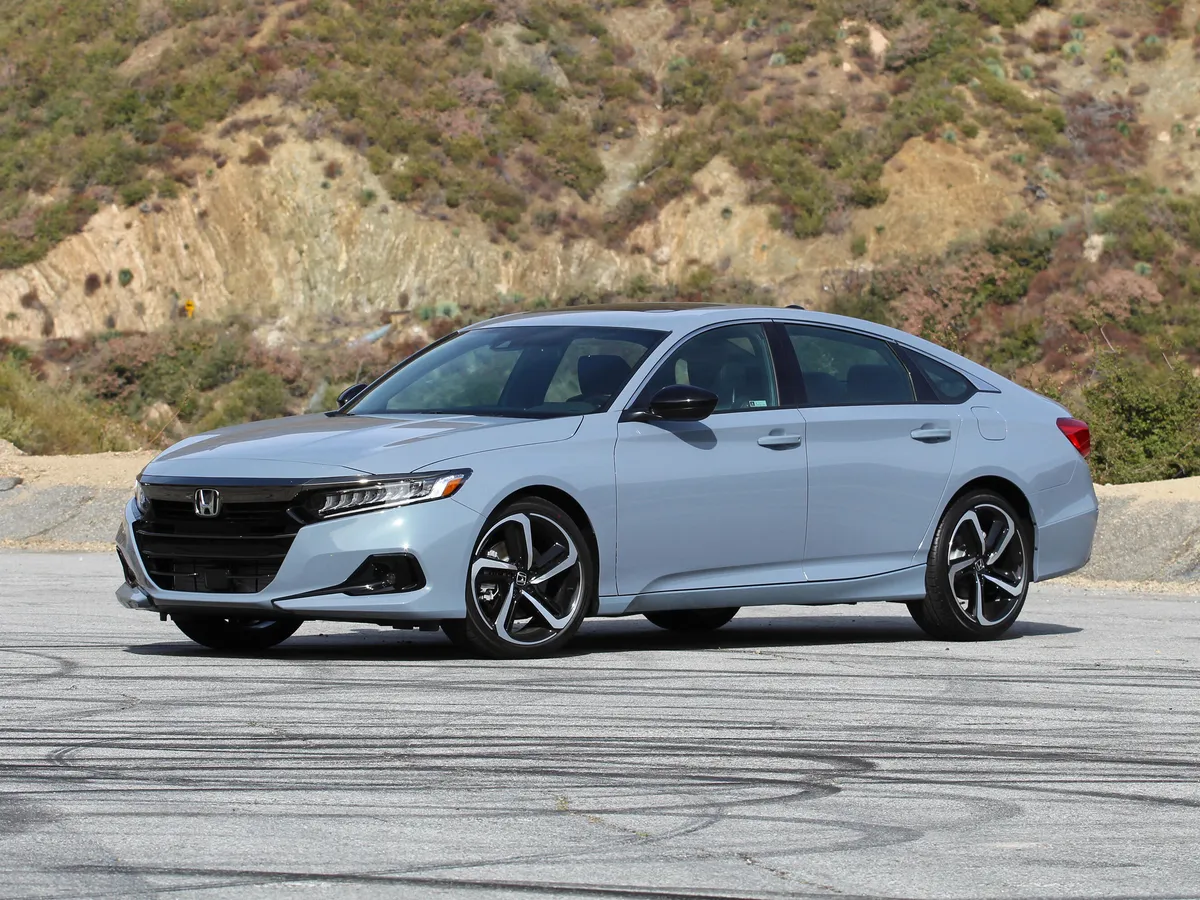
The cabin’s spacious design ensures that drivers of various sizes can find comfortable seating positions, while the rear seats provide adequate room for passengers or can be folded down to accommodate larger cargo items.
The climate control system operates quietly and efficiently, maintaining comfortable temperatures without creating excessive noise or significantly impacting fuel economy.
The Accord’s technology features are designed to enhance convenience and safety without creating distractions during driving. The infotainment system provides quick access to navigation, communication, and entertainment functions through intuitive controls and clear display graphics.
The available premium audio system delivers excellent sound quality that makes long drives more enjoyable, while the Honda Sensing suite of safety features includes adaptive cruise control, collision mitigation braking, and lane keeping assist that reduce driver fatigue during extended highway driving.
The vehicle’s smartphone integration allows seamless access to apps, music, and hands-free communication that keep drivers connected while maintaining focus on the road.
Reliability and durability have always been Honda’s hallmarks, and the Accord continues this tradition with exceptional build quality and longevity. The vehicle’s construction uses proven materials and manufacturing techniques that result in minimal long-term maintenance requirements.
The powertrain components are designed to withstand high-mileage use, with many Accord owners reporting trouble-free operation well beyond 200,000 miles. Regular maintenance is straightforward and affordable, with widely available parts and service support from Honda’s extensive dealer network.
The Accord’s strong resale value reflects its reputation for durability and makes it an excellent long-term investment for commuters who eventually want to upgrade to newer vehicles.
3. Subaru Outback
The Subaru Outback has carved out a unique niche in the automotive market by combining the comfort and fuel efficiency of a traditional wagon with the capability and confidence of an SUV, making it an ideal choice for commuters who need versatility along with daily driving excellence.
This crossover wagon excels in conditions that would challenge traditional sedans while maintaining the on-road comfort and efficiency that daily drivers require.
The Outback’s standard all-wheel-drive system sets it apart from most competitors and provides significant advantages for commuters who face varying weather conditions throughout the year.
The symmetrical all-wheel-drive system continuously monitors traction conditions and automatically sends power to the wheels with the best grip, providing confident handling in rain, snow, or on unpaved roads.
This capability means that Outback drivers can maintain their commuting schedules regardless of weather conditions that might strand drivers of front-wheel-drive vehicles.
The system operates seamlessly without driver intervention and has minimal impact on fuel economy, achieving an EPA-estimated 26 mpg in the city and 33 mpg on the highway with the base engine.
The Outback’s interior design prioritizes comfort and practicality for long-distance driving. The seats are designed with generous cushioning and support that remains comfortable during extended drives, with available leather-appointed seating that adds durability and easy maintenance.

The driving position is commanding yet comfortable, with excellent visibility in all directions that reduces driver fatigue and increases safety awareness.
The cabin’s spacious design accommodates passengers comfortably while providing exceptional cargo capacity that makes the Outback practical for drivers who need to transport work equipment, sports gear, or other items as part of their daily routine. The rear seats fold flat to create a massive cargo area that can accommodate large items when needed.
Technology integration in the Outback focuses on enhancing safety and convenience during daily driving. The STARLINK infotainment system provides clear navigation guidance and entertainment options through an intuitive touchscreen interface that responds quickly to inputs.
The available premium Harman Kardon audio system delivers excellent sound quality that makes music and podcasts enjoyable during long drives.
Subaru’s EyeSight suite of safety features includes adaptive cruise control, pre-collision braking, and lane departure warning that work together to reduce driver stress and fatigue during highway driving. The system’s cameras continuously monitor the road ahead and can intervene to prevent accidents or maintain safe following distances.
The Outback’s build quality reflects Subaru’s commitment to durability and longevity, with many owners reporting reliable operation well beyond 200,000 miles. The vehicle’s construction uses high-strength materials in key areas while maintaining reasonable weight for optimal fuel efficiency and handling characteristics.
The boxer engine design provides a low center of gravity that contributes to stable handling and reduced vibration, while the robust transmission and all-wheel-drive components are designed to withstand the additional stress of continuous all-wheel operation. Regular maintenance requirements are reasonable and straightforward, with Subaru’s extensive dealer network providing readily available service and parts support.
The Outback’s strong resale value reflects its reputation for reliability and capability, making it an excellent long-term investment for commuters who value versatility and dependability.
4. Lexus ES 350
The Lexus ES 350 represents the luxury segment’s approach to long-distance commuting, combining Toyota’s renowned reliability with premium materials, advanced technology, and exceptional comfort that transforms even the longest daily drives into pleasant experiences.
This luxury sedan demonstrates that commuter-focused vehicles don’t have to compromise on refinement or prestige while delivering the dependability and efficiency that daily drivers require.
The ES 350’s powertrain strikes an ideal balance between performance and efficiency, utilizing a smooth 3.5-liter V6 engine that produces 302 horsepower while achieving an EPA-estimated 22 mpg in the city and 32 mpg on the highway. The engine’s naturally aspirated design provides linear power delivery and exceptional reliability, with smooth operation that remains refined even under heavy acceleration.
The eight-speed automatic transmission shifts seamlessly and is programmed to prioritize fuel efficiency during normal driving while providing quick downshifts when additional power is needed for highway passing or merging.
The powertrain’s refinement eliminates the vibrations and noise that can cause fatigue during long drives, while the robust construction ensures reliable operation even under the demanding conditions of daily high-mileage use.
Interior luxury in the ES 350 is immediately apparent and specifically designed to enhance long-distance comfort. The seats feature premium leather upholstery with heating, ventilation, and memory functions that allow drivers to create the perfect seating position for extended drives.
The seat design incorporates multiple adjustment points and lumbar support that can be fine-tuned to prevent back fatigue during long commutes.
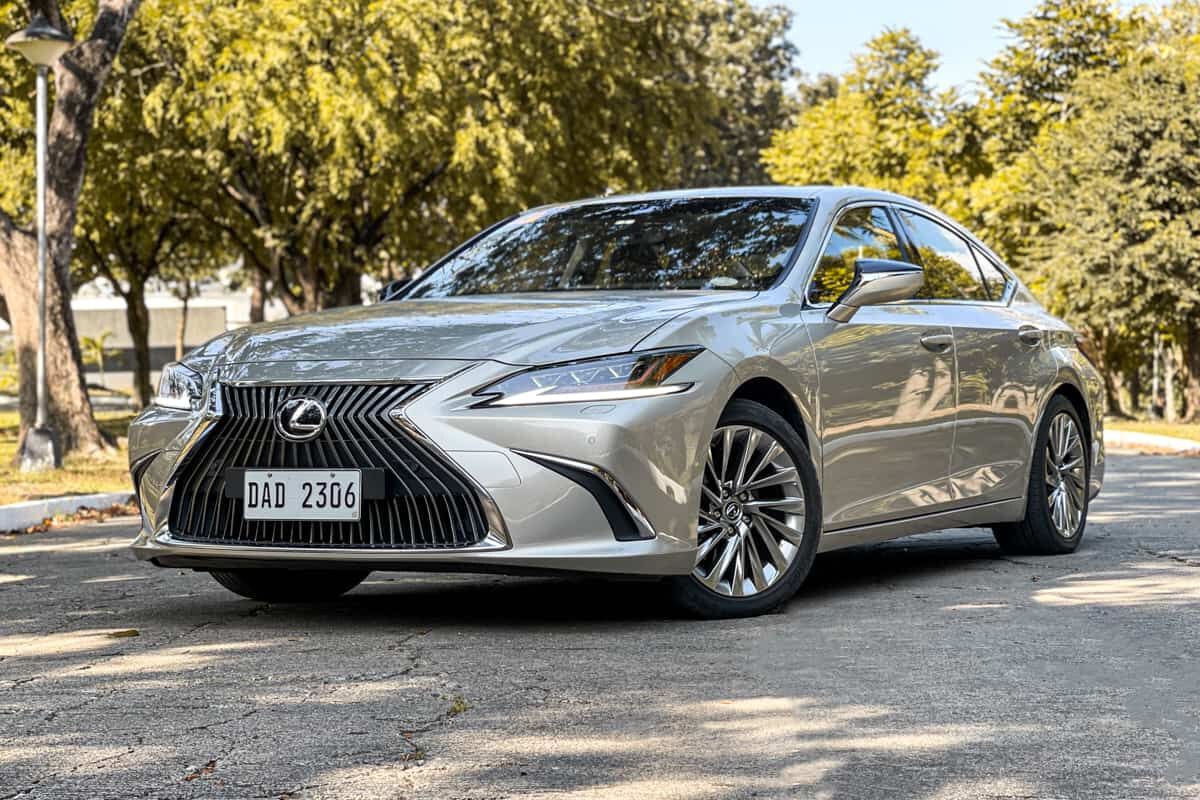
The cabin’s spacious design ensures that even taller drivers have adequate headroom and legroom, while the rear seats provide luxury-level comfort for passengers. The climate control system operates with whisper-quiet efficiency, maintaining perfect temperatures without creating noise that might interfere with conversation or audio entertainment.
Technology integration in the ES 350 focuses on providing luxury convenience features while maintaining the reliability that Lexus owners expect. The infotainment system provides access to navigation, communication, and entertainment functions through both touchscreen and traditional control interfaces that accommodate different user preferences.
The available Mark Levinson premium audio system delivers audiophile-quality sound that makes music, podcasts, and audiobooks exceptional during long drives. The Lexus Safety System+ includes adaptive cruise control, lane departure alert, and a pre-collision system that work together to reduce driver stress and fatigue during highway driving.
The system’s radar and camera technologies continuously monitor traffic conditions and can intervene to prevent accidents or maintain safe following distances. The ES 350’s build quality reflects Lexus’s commitment to luxury and longevity, with materials and construction techniques that ensure the vehicle maintains its premium feel even after years of daily use.
The interior materials are selected for their durability and aging characteristics, with leather and trim pieces that develop an attractive patina rather than showing wear. The vehicle’s sound insulation is exceptional, creating a quiet cabin environment that reduces fatigue during long drives.
The powertrain and chassis components are designed to provide hundreds of thousands of miles of reliable operation, with many ES owners reporting trouble-free service well beyond 300,000 miles.
Regular maintenance requirements are reasonable for a luxury vehicle, and Lexus’s dealer network provides exceptional service support that includes amenities like loaner vehicles and concierge services that make ownership convenient for busy commuters.
Also Read: 5 Engines That Are Quiet for 300K Miles and 5 That Always Knock
5. Tesla Model S
The Tesla Model S revolutionizes the long-distance commuting experience by combining cutting-edge electric technology with luxury comfort and performance that makes every mile both efficient and enjoyable.
This electric luxury sedan demonstrates that zero-emission driving doesn’t require compromises in range, comfort, or capability, while providing unique advantages that traditional internal combustion vehicles cannot match.
The Model S’s electric powertrain delivers instant torque and whisper-quiet operation that transforms the daily driving experience. The dual-motor all-wheel-drive system provides exceptional traction in all weather conditions while delivering acceleration that makes highway merging and passing effortless.
The electric motors require no warm-up time and provide consistent performance regardless of weather conditions, while the regenerative braking system recovers energy during deceleration and reduces wear on conventional brake components.
The EPA-estimated range of over 400 miles means that most commuters can drive for several days without needing to charge, while the growing network of Tesla Supercharger stations provides fast charging capabilities for longer trips.
Interior technology in the Model S centers around a massive touchscreen interface that controls virtually all vehicle functions while providing access to entertainment, navigation, and communication features.
The system’s processing power enables features like real-time traffic updates, over-the-air software updates that continuously improve vehicle functionality, and entertainment options including streaming video and gaming when parked.
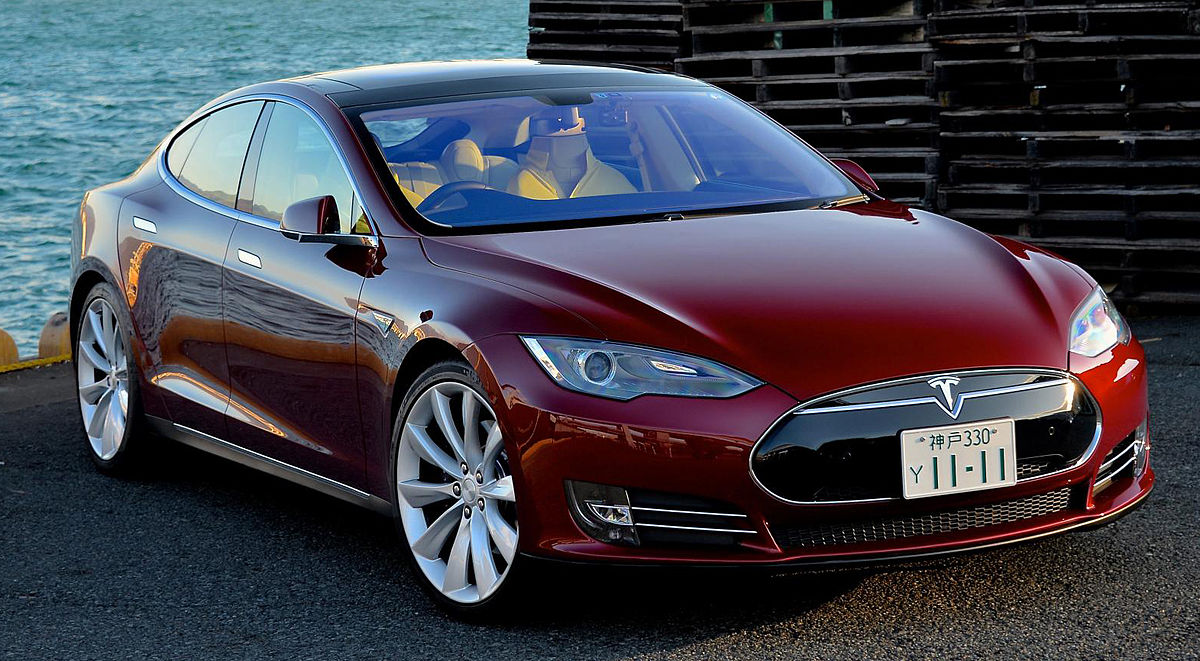
The premium audio system delivers concert-quality sound that makes music and podcasts exceptional during long drives, while the cabin’s minimalist design eliminates the distractions of traditional controls and switches. The glass roof provides an open, airy feeling that reduces the claustrophobic sensation that can develop during long drives in traditional vehicles.
Comfort features in the Model S are designed to support extended driving sessions with seats that provide excellent support and can be adjusted to accommodate drivers of various sizes.
The available massage functions and heating/cooling capabilities allow drivers to customize their comfort level throughout long drives, while the spacious cabin design ensures adequate room for passengers and cargo.
The climate control system operates silently and efficiently, pre-conditioning the cabin before departure and maintaining perfect temperatures without the noise and vibration of traditional systems.
The vehicle’s low center of gravity, due to the floor-mounted battery pack, provides exceptional stability and reduces the motion that can cause fatigue during long highway drives.
The Model S’s ownership experience differs significantly from traditional vehicles, with advantages that particularly benefit high-mileage commuters. The electric powertrain requires minimal maintenance, with no oil changes, spark plug replacements, or transmission services needed.
The reduced maintenance requirements mean fewer service visits and lower long-term ownership costs, while the vehicle’s over-the-air update capability means that new features and improvements are delivered automatically without requiring dealer visits.
The ability to charge at home means that drivers can start each day with a full battery, eliminating the need for regular gas station visits. The vehicle’s technology continuously monitors system performance and can alert drivers to potential issues before they become problems, while Tesla’s service network provides mobile service for many common maintenance items.
5 Cars That Age Rapidly
These problematic vehicles suffer from fundamental design compromises and cost-cutting measures that accelerate wear patterns and create premature deterioration under typical commuting conditions.
Their components feature inadequate materials, insufficient engineering margins, or manufacturing deficiencies that promote rapid aging when subjected to daily driving stress and environmental exposure.
From interior plastics that become brittle to mechanical systems that develop premature failures, these automobiles consistently show their age through accelerated degradation that frustrates owners and mechanics alike.
The recurring nature of these aging issues demonstrates how initial design and manufacturing decisions can plague vehicle reliability, requiring constant maintenance and creating poor long-term ownership experiences.
The Range Rover Evoque’s complex electronic systems and air suspension components develop costly failures that accumulate rapidly with mileage, while interior materials show premature wear under normal use.
The BMW 3 Series experiences accelerated aging through expensive maintenance requirements and electronic module failures that compound over time, creating escalating repair costs. The Jeep Compass suffers from poor build quality with interior trim pieces that break easily and mechanical components that wear prematurely under routine driving conditions.
The Nissan CVT-equipped Altima ages rapidly due to transmission failures and interior materials that deteriorate quickly, showing visible wear patterns within the first few years. The Mini Cooper’s high-maintenance turbocharged engine and premium interior materials create rapid aging through frequent repair needs and accelerated component deterioration under daily use.
1. Range Rover Evoque
The Range Rover Evoque, while undeniably stylish and luxurious, represents a cautionary tale for potential long-distance commuters who prioritize reliability and longevity over prestige and design.
This compact luxury SUV has gained attention for its distinctive styling and premium interior, but its track record reveals numerous issues that make it poorly suited for the demanding conditions of daily high-mileage use.
The Evoque’s powertrain options have been problematic since the vehicle’s introduction, with the turbocharged four-cylinder engines experiencing issues that become more pronounced with high-mileage use.
The 2.0-liter turbocharged engine, while producing adequate power, has demonstrated problems with carbon buildup, turbocharger failures, and timing chain stretch that can lead to expensive repairs.
These issues are exacerbated by the stop-and-go traffic conditions common in daily commuting, where the turbocharger experiences frequent heat cycling and the engine operates under less than ideal conditions.
The nine-speed automatic transmission has also proven problematic, with reported issues including harsh shifting, hesitation during acceleration, and premature failure of internal components that require expensive repairs or complete replacement.
Interior quality in the Evoque, while initially impressive, has shown poor aging characteristics that become apparent with regular use. The leather upholstery tends to wear quickly, particularly on the driver’s seat bolster and steering wheel, showing significant wear patterns within the first few years of ownership.
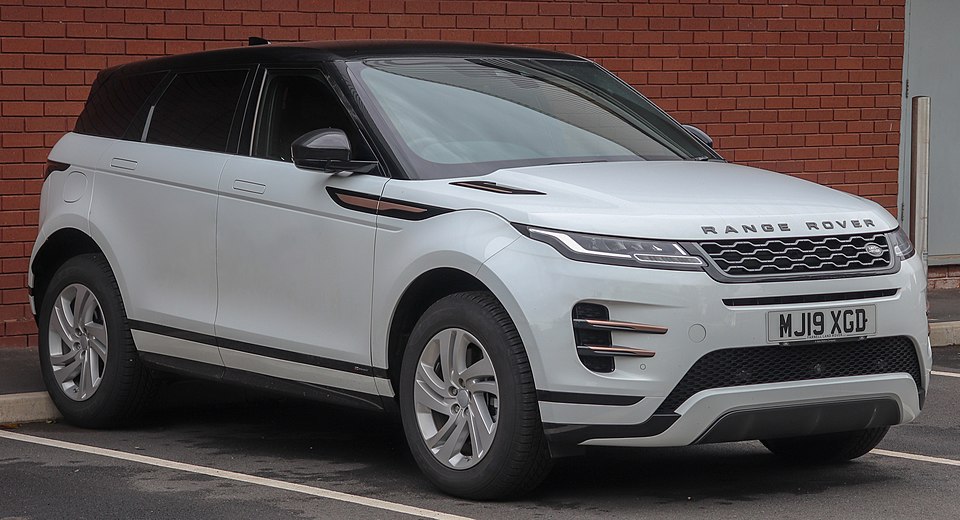
The electronic controls and infotainment system have demonstrated reliability issues, with touchscreen failures, unresponsive buttons, and software glitches that can leave drivers without access to climate control, navigation, or entertainment functions.
The panoramic sunroof, while attractive, has been the source of numerous water leaks that can cause extensive interior damage and create ongoing maintenance headaches for owners.
The Evoque’s suspension system, designed to provide a comfortable ride quality, has proven to be one of its most problematic systems for long-term ownership. The air suspension components are particularly prone to failure, with air springs, compressors, and control modules failing at relatively low mileages.
These failures not only result in expensive repairs but can also leave the vehicle unsafe to drive, stranding owners during their daily commutes. The electronic systems that control the suspension are also susceptible to moisture damage and electronic failures that can cause erratic behavior and costly diagnostic challenges for repair technicians.
Reliability issues with the Evoque extend beyond mechanical problems to include frequent electrical failures that can affect everything from lighting systems to engine management. The vehicle’s complex electronic architecture, while providing advanced features, has proven to be unreliable in real-world conditions.
Owners report frequent visits to service centers for issues ranging from battery drain problems to complete electrical system failures. The cost of repairs is particularly burdensome, with parts prices reflecting the vehicle’s luxury positioning and labor costs increased by the complex diagnostic procedures required to identify and resolve problems.
The vehicle’s poor reliability record has also negatively impacted its resale value, making it a poor investment for owners who plan to sell or trade the vehicle after a few years of ownership.
2. BMW X6
The BMW X6, despite its impressive performance credentials and luxury appointments, has developed a reputation for rapid aging and expensive maintenance that makes it unsuitable for drivers who need reliable, cost-effective transportation for daily commuting.
This luxury SUV coupe represents the challenges that can arise when complex engineering and premium materials are subjected to the demanding conditions of regular high-mileage use.
The X6’s powertrain options, while powerful and sophisticated, have demonstrated numerous reliability issues that become more frequent and expensive as mileage accumulates.
The turbocharged engines, particularly the inline-six and V8 variants, are prone to issues including turbocharger failures, high-pressure fuel pump problems, and cooling system leaks that can result in catastrophic engine damage if not addressed promptly.
The complex all-wheel-drive system, while providing excellent traction and handling, includes numerous electronic components and mechanical systems that can fail, resulting in expensive repairs and potential safety issues.
The eight-speed automatic transmission, while smooth in operation, has shown problems with valve body failures and torque converter issues that require complete transmission rebuilds.
Interior degradation in the X6 occurs more rapidly than expected for a luxury vehicle, with materials showing wear and electronic failures becoming common after just a few years of regular use. The leather upholstery, while initially premium, tends to crack and fade quickly, particularly in areas exposed to sunlight or regular contact.
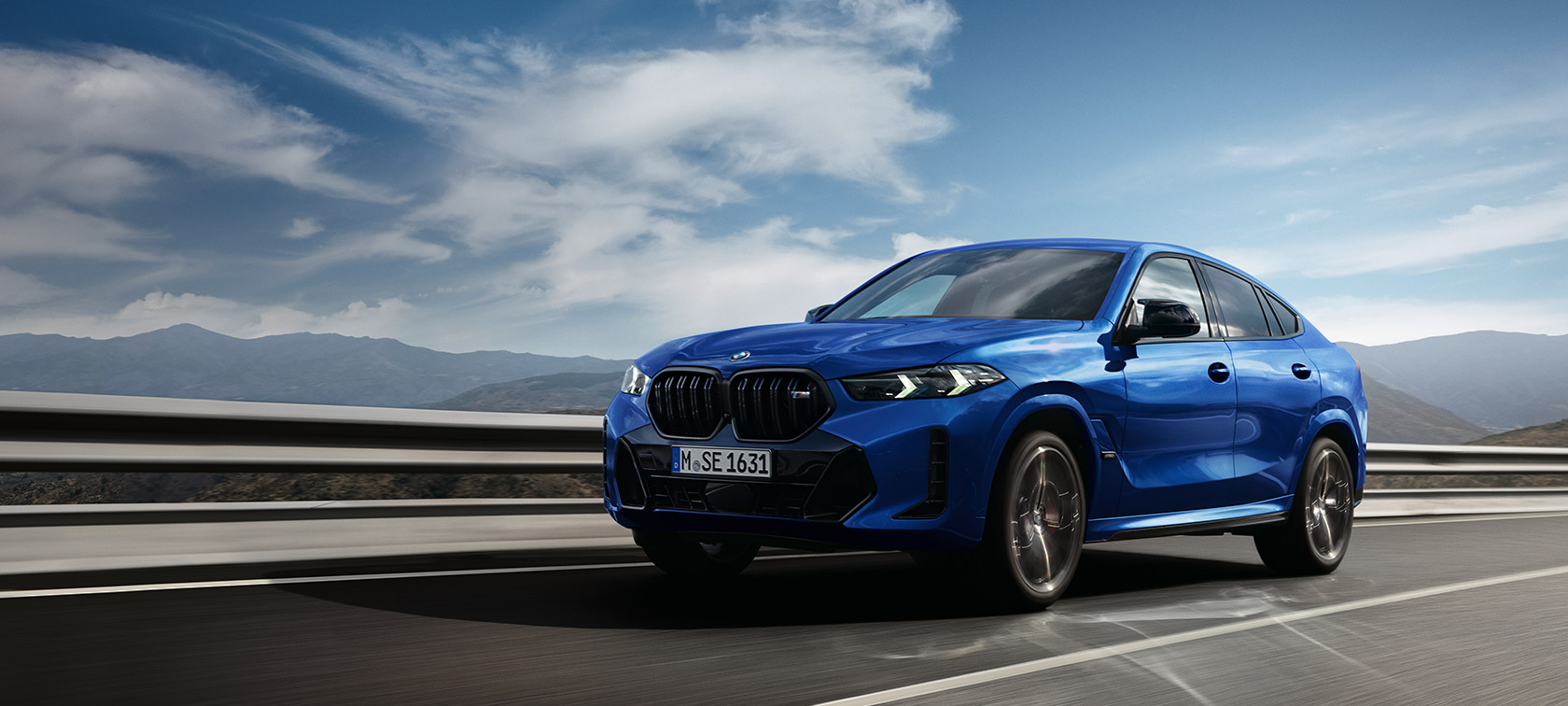
The iDrive infotainment system, while feature-rich, has demonstrated reliability issues, including screen failures, software glitches, and complete system crashes that can leave drivers without access to navigation, climate control, or entertainment functions.
The electronic seat controls and memory functions are particularly prone to failure, with motors and position sensors requiring frequent replacement.
The X6’s electrical system represents one of its most problematic aspects for long-term ownership, with numerous electronic modules and sensors that can fail and cause cascading problems throughout the vehicle.
The battery drainage issues are common, often caused by parasitic draws from failing electronic components that can leave owners stranded. The vehicle’s numerous electronic safety and convenience features, while impressive when functioning properly, become sources of expensive repairs when they malfunction.
The complexity of the electrical system makes diagnosis and repair challenging and time-consuming, resulting in high labor costs and extended periods without the vehicle.
Maintenance costs for the X6 are significantly higher than average, with routine services requiring expensive synthetic oils, premium filters, and specialized diagnostic equipment.
The vehicle’s design makes many routine maintenance tasks labor-intensive, with simple procedures like oil changes requiring removal of extensive plastic covers and access panels.
The cost of replacement parts reflects the vehicle’s luxury positioning, with even basic components carrying premium prices. The vehicle’s rapid depreciation means that owners often find themselves in situations where repair costs exceed the vehicle’s value, making continued ownership economically unfeasible.
The combination of high maintenance costs, frequent repairs, and poor resale value makes the X6 one of the most expensive vehicles to own over time.
3. Jaguar XF
The Jaguar XF, while offering undeniable style and luxury, has established a troubling reputation for reliability issues and rapid aging that makes it a poor choice for drivers who depend on their vehicle for daily commuting.
This luxury sedan exemplifies the challenges that can arise when sophisticated engineering and premium materials are not backed by robust reliability and durability engineering.
The XF’s engine lineup, while providing impressive performance, has demonstrated numerous reliability issues that become more frequent and expensive as the vehicle ages.
The supercharged V6 and V8 engines are particularly problematic, with issues including supercharger failures, timing chain problems, and cooling system leaks that can result in catastrophic engine damage.
The diesel engine options, while fuel-efficient, have shown problems with emissions system components, turbocharger failures, and fuel injection issues that can leave drivers stranded.
The eight-speed automatic transmission, while smooth in operation, has demonstrated problems with valve body failures and electronic control issues that require expensive repairs or complete replacement.
Interior quality in the XF, while initially impressive, deteriorates rapidly with regular use, showing wear patterns and electronic failures that become apparent within the first few years of ownership. The leather upholstery tends to crack and fade quickly, particularly in areas exposed to sunlight or regular contact.
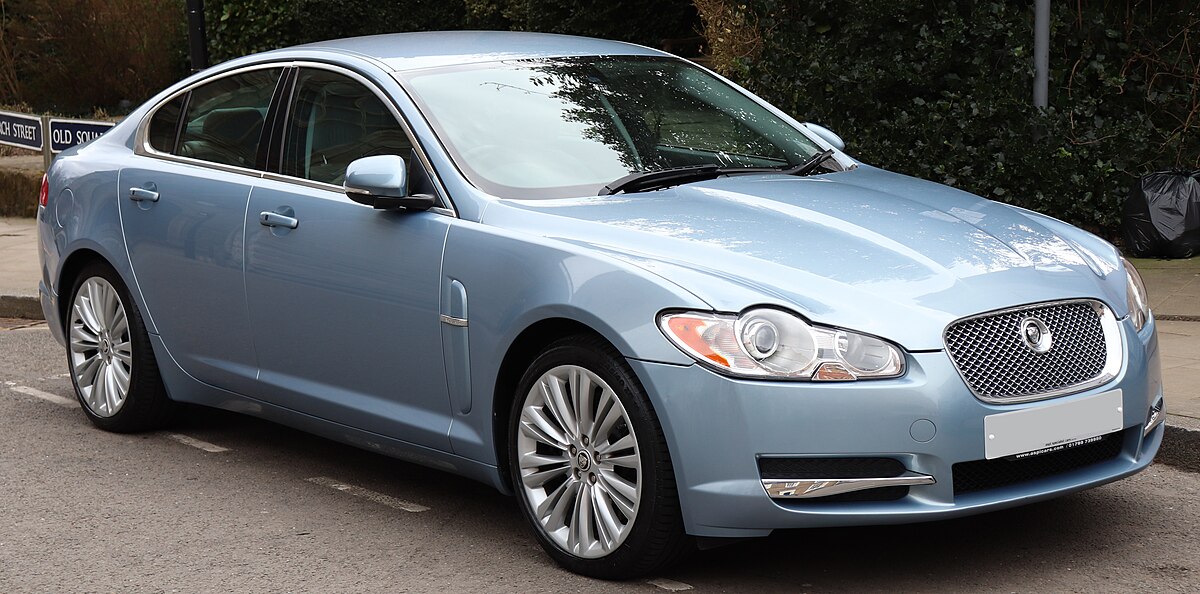
The wood trim pieces can separate from their backing or develop unsightly cracks that detract from the vehicle’s luxury appearance. The electronic controls and infotainment system have proven unreliable, with touchscreen failures, unresponsive buttons, and software glitches that can leave drivers without access to essential vehicle functions.
The XF’s electrical system is particularly problematic, with numerous electronic modules and sensors that can fail and cause cascading problems throughout the vehicle.
The vehicle’s sophisticated electronic architecture, while providing advanced features, has proven to be unreliable in real-world conditions. Owners report frequent electrical failures affecting everything from lighting systems to engine management, with problems that can be difficult and expensive to diagnose and repair.
The battery drainage issues are common, often caused by parasitic draws from failing electronic components that can leave owners stranded with dead batteries.
Maintenance and repair costs for the XF are significantly higher than average, with routine services requiring expensive synthetic oils, premium filters, and specialized diagnostic equipment available only at Jaguar dealerships.
The vehicle’s design makes many routine maintenance tasks labor-intensive, with simple procedures requiring the removal of extensive covers and access panels. The cost of replacement parts reflects the vehicle’s luxury positioning and limited production volumes, with even basic components carrying premium prices.
The vehicle’s poor reliability record has also negatively impacted its resale value, making it a poor investment for owners who plan to sell or trade the vehicle after a few years of ownership.
4. Audi Q7
The Audi Q7, despite its impressive luxury appointments and advanced technology, has developed a concerning reputation for reliability issues and expensive maintenance that make it unsuitable for drivers who need dependable transportation for daily commuting.
This three-row luxury SUV represents the challenges that arise when complex engineering and premium materials are subjected to the demanding conditions of regular high-mileage use.
The Q7’s powertrain options, while providing excellent performance and efficiency, have demonstrated numerous reliability issues that become more frequent and expensive as mileage accumulates.
The supercharged V6 engine, while powerful and refined, is prone to issues including carbon buildup, timing chain problems, and cooling system leaks that can result in expensive repairs.
The diesel engine options, while fuel-efficient, have shown problems with emissions system components, particularly the diesel particulate filter and exhaust gas recirculation system, that can result in expensive repairs and potential vehicle downtime.
The eight-speed automatic transmission, while smooth in operation, has demonstrated problems with valve body failures and electronic control issues that require expensive repairs.
Interior degradation in the Q7 occurs more rapidly than expected for a luxury vehicle, with materials showing wear and electronic failures becoming common after just a few years of regular use. The leather upholstery, while initially premium, tends to crack and fade quickly, particularly in areas exposed to sunlight or regular contact.
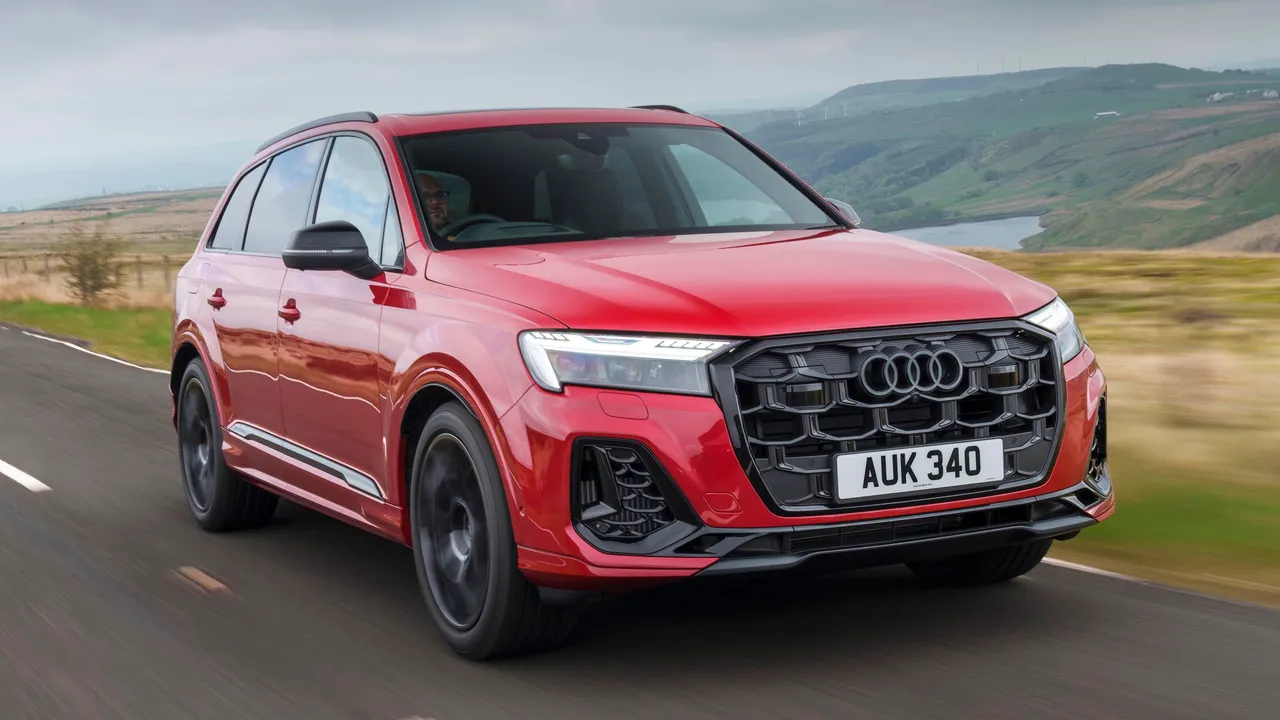
The electronic controls and infotainment system have demonstrated reliability issues, including screen failures, software glitches, and complete system crashes that can leave drivers without access to navigation, climate control, or entertainment functions.
The electronic seat controls and memory functions are particularly prone to failure, with motors and position sensors requiring frequent replacement.
The Q7’s air suspension system, designed to provide a comfortable ride quality and adjustable ground clearance, has proven to be one of its most problematic systems for long-term ownership. The air springs, compressors, and control modules are prone to failure, with these components failing at relatively low mileages and resulting in expensive repairs.
When the air suspension fails, the vehicle can become unsafe to drive and may require towing to a service facility. The electronic systems that control the suspension are also susceptible to moisture damage and electronic failures that can cause erratic behavior and costly diagnostic challenges.
Maintenance costs for the Q7 are significantly higher than average, with routine services requiring expensive synthetic oils, premium filters, and specialized diagnostic equipment available primarily at Audi dealerships.
The vehicle’s design makes many routine maintenance tasks labor-intensive, with simple procedures like oil changes requiring removal of extensive plastic covers and access panels.
The cost of replacement parts reflects the vehicle’s luxury positioning and complex engineering, with even basic components carrying premium prices. The vehicle’s rapid depreciation means that owners often find themselves in situations where repair costs exceed the vehicle’s value, making continued ownership economically unfeasible.
5. Mercedes-Benz GLA
The Mercedes-Benz GLA, while offering the prestige of the Mercedes brand and attractive styling, has established a troubling reputation for reliability issues and rapid aging that makes it a poor choice for drivers who depend on their vehicle for daily commuting.
This compact luxury SUV exemplifies the challenges that can arise when cost-cutting measures and complex engineering are combined in a vehicle marketed as a premium product.
The GLA’s engine lineup, while providing adequate performance, has demonstrated numerous reliability issues that become more frequent and expensive as the vehicle ages. The turbocharged four-cylinder engines are particularly problematic, with issues including turbocharger failures, timing chain stretch, and cooling system leaks that can result in expensive repairs.
The dual-clutch transmission, while providing quick shifts, has shown problems with clutch wear, electronic control issues, and complete transmission failure that can leave drivers stranded.
These powertrain problems are exacerbated by the stop-and-go traffic conditions common in daily commuting, where the turbocharger and transmission experience frequent heat cycling and stress.
Interior quality in the GLA, while initially appearing luxurious, deteriorates rapidly with regular use, showing wear patterns and electronic failures that become apparent within the first few years of ownership. The plastic trim pieces tend to crack and fade quickly, particularly in areas exposed to sunlight or regular contact.
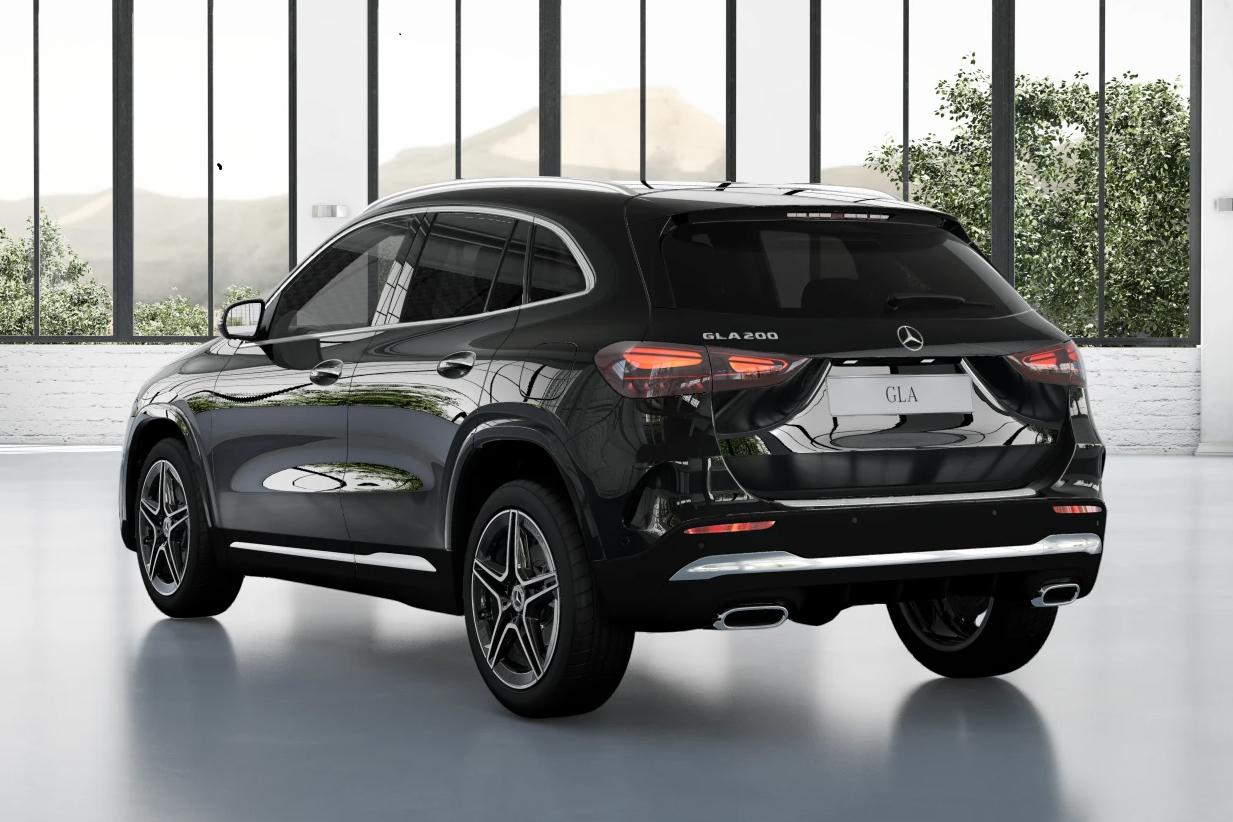
The electronic controls and infotainment system have proven unreliable, with touchscreen failures, unresponsive buttons, and software glitches that can leave drivers without access to essential vehicle functions. The seat materials, while initially attractive, tend to show wear quickly and can develop permanent stains or damage from regular use.
The GLA’s electrical system is particularly problematic, with numerous electronic modules and sensors that can fail and cause cascading problems throughout the vehicle.
The vehicle’s sophisticated electronic architecture, while providing advanced features, has proven to be unreliable in real-world conditions. Owners report frequent electrical failures affecting everything from lighting systems to engine management, with problems that can be difficult and expensive to diagnose and repair.
The battery drainage issues are common, often caused by parasitic draws from failing electronic components that can leave owners stranded. Maintenance and repair costs for the GLA are significantly higher than average, with routine services requiring expensive synthetic oils, premium filters, and specialized diagnostic equipment available primarily at Mercedes-Benz dealerships.
The vehicle’s design makes many routine maintenance tasks labor-intensive, with simple procedures requiring the removal of extensive covers and access panels. The cost of replacement parts reflects the vehicle’s luxury positioning, with even basic components carrying premium prices that can make routine maintenance expensive.
The vehicle’s poor reliability record has also negatively impacted its resale value, making it a poor investment for owners who plan to sell or trade the vehicle after a few years of ownership, particularly when compared to more reliable alternatives in the compact luxury SUV segment.
Also Read: 5 Engines With Legendary Camshafts and 5 That Always Need Top-End Work

